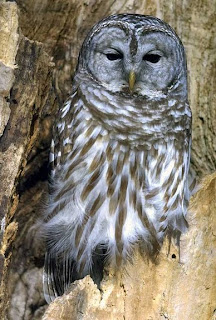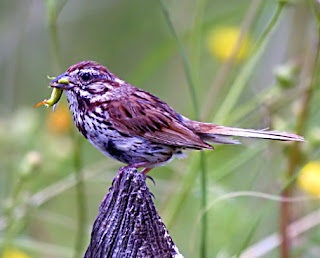Feeding Flocks
Cattle Egret
Birds feed: 1) solitary or in pairs; 2) single species flocks 3) mixed species flocks (3-20 species with few individuals of any one species).
(I might mention INTERSPECIFIC FEEDING ASSOCIATIONS: A species needs another organism for food either by necessity or opportunity -- rare in birds. Examples inlcude oxpecker or Cattle Egrets following cattle, antbirds following army ant swarms, honeyguides leading mammals to bee hives.)
Feeding flocks are not just feeding aggregations. Flocks are integrated, they act as group when danger threatens fly at same time, in same direction, etc.
Flock members can learn from one another. Great Tits in England learned to pull of milk can tops to drink the fat at the top of unpasturized milk. This behavior was documented as it spread through the population.
Other terms to take note of include: individual distance (others dare not intrude) and pecking order (usual in intraspecific flocks, reduces aggression-- everyone knows his or her place)
Crook studied Ploceidae in Africa. He found dispersion of good supply affects social organization. A gradient exists: evenly distributed food = solitary species; clumped food = single species flocks (mixed species unknown in plocieds). The correlation holds up fairly well except in some fruit and flower-eaters, which are solitary species. (Flowers are renewable but fruit isn't.)




Comments
Post a Comment